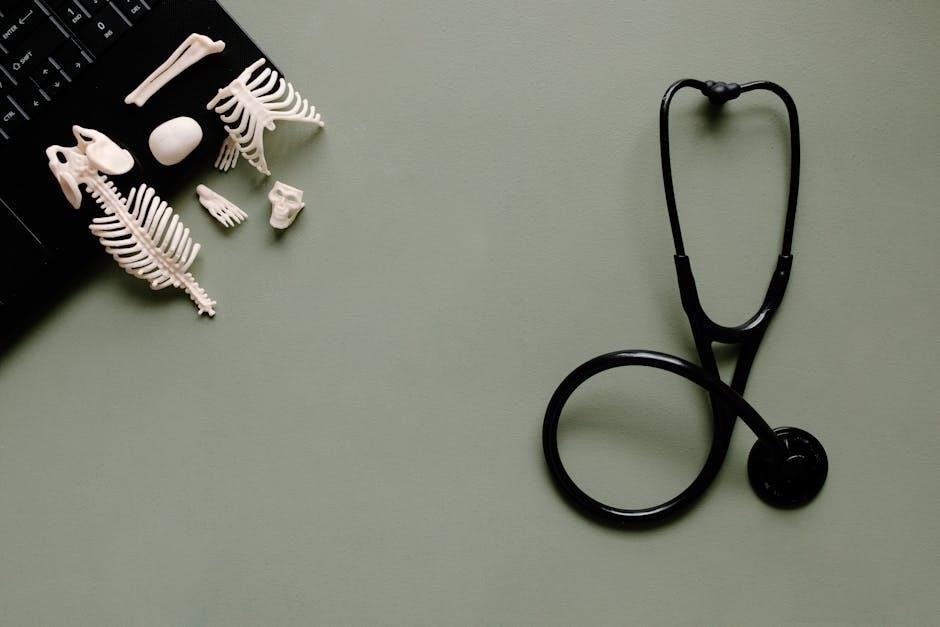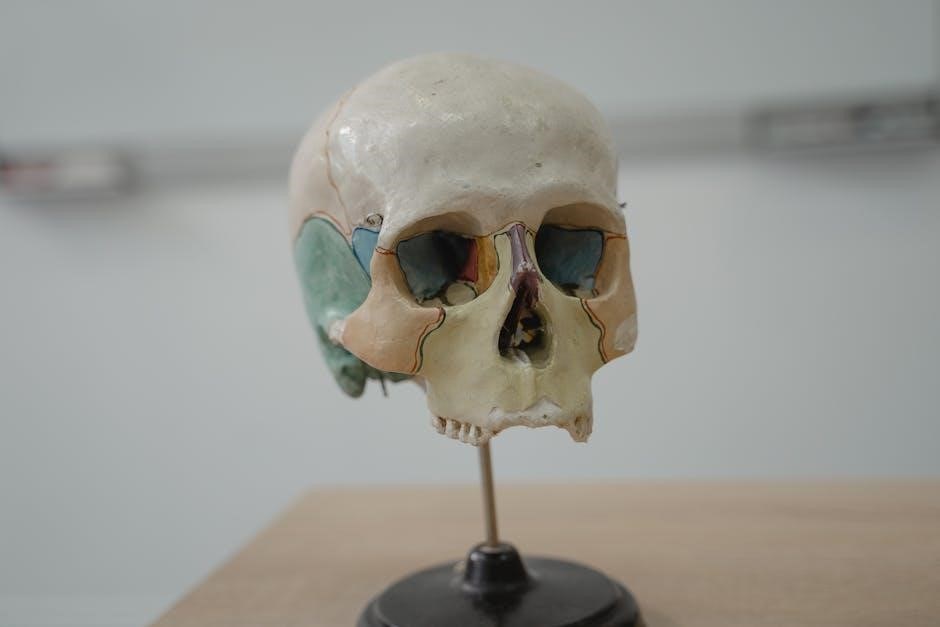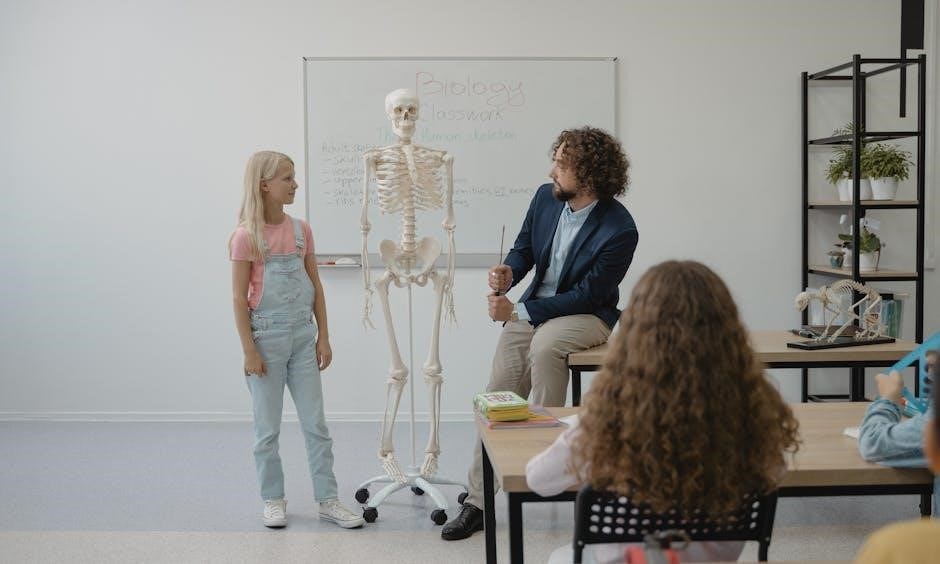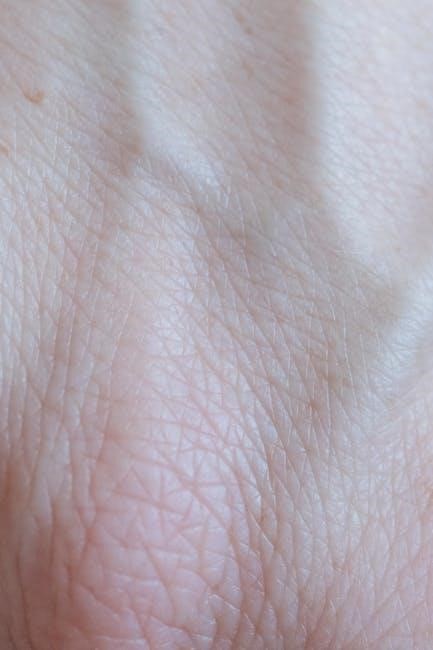Anatomy and physiology are fundamental sciences studying the structure and function of living organisms. They provide essential knowledge for healthcare professionals and students, enabling understanding of the human body’s intricacies.
1.1 Overview of Anatomy and Physiology
Anatomy and physiology are interconnected sciences that explore the structure and function of living organisms. Anatomy focuses on the physical organization of body parts, while physiology examines how these parts function and interact. Together, they provide a comprehensive understanding of the human body, essential for healthcare professionals, students, and researchers. The study of anatomy involves various branches, such as gross, microscopic, and systemic anatomy, while physiology delves into processes like homeostasis and feedback loops. These disciplines are vital for understanding health, disease, and treatment. Resources like study guides, interactive tools, and textbooks are widely used to master these complex topics.
1;2 Importance of Studying Anatomy and Physiology
Studying anatomy and physiology is crucial for understanding how the human body functions. It provides foundational knowledge for healthcare professionals, enabling them to diagnose and treat diseases effectively. Anatomy helps identify physical structures, while physiology explains their functions, making it vital for medical fields like nursing, medicine, and physiotherapy. Understanding these subjects also aids in appreciating normal body functions and identifying abnormalities. Additionally, anatomy and physiology are essential for scientific research and advancements in healthcare. Resources like study guides and interactive tools simplify learning, ensuring students grasp complex concepts efficiently. This knowledge is indispensable for anyone pursuing careers in health and science.

Branches of Anatomy
Anatomy is divided into branches like gross, microscopic, regional, and systematic anatomy. Each branch focuses on different methods or areas of study within the human body.
2.1 Gross Anatomy
Gross anatomy focuses on the study of the body’s visible structures, typically examined without magnification. It involves the dissection of cadavers to explore organs, tissues, and systems. This branch is foundational in medical education, helping students understand spatial relationships between anatomical structures. Gross anatomy is essential for surgeons, as it provides practical knowledge of organ placement and accessibility during procedures. It also aids in diagnostic imaging, allowing professionals to interpret X-rays and MRIs accurately. Textbooks and study guides often include detailed illustrations to complement hands-on learning. By mastering gross anatomy, healthcare professionals gain the ability to identify and treat conditions effectively, making it a cornerstone of medical training.
2.2 Microscopic Anatomy
Microscopic anatomy delves into the study of tissues and cells, requiring magnification to observe structural details invisible to the naked eye. This branch is crucial for understanding cellular functions and tissue organization, often using light or electron microscopes. Histology, a subset of microscopic anatomy, examines tissue samples to identify normal and pathological conditions. Knowledge of microscopic anatomy aids in diagnosing diseases, such as cancer, by analyzing cellular abnormalities. Study guides and resources frequently include high-resolution images and diagrams to facilitate learning. By exploring the microscopic level, students gain insights into how tissues contribute to overall bodily functions, connecting structure with physiology. This understanding is vital for advancing medical research and treatment.
2.3 Regional Anatomy
Regional anatomy focuses on the study of specific body regions, such as the head, neck, or abdominal cavity. It provides a comprehensive understanding of the spatial relationships between structures within these areas. This approach is particularly useful for surgeons and clinicians, as it helps in identifying anatomical landmarks during procedures. By examining entire regions, students can better appreciate how organs and systems interact. Study guides often include detailed illustrations and cross-sectional views to enhance learning. Regional anatomy bridges the gap between microscopic and systemic studies, offering a practical perspective for real-world applications in medicine and healthcare. This method is essential for developing diagnostic and surgical skills.
2.4 Systematic Anatomy
Systematic anatomy involves the study of body systems and their components, such as the skeletal, muscular, and nervous systems. This approach focuses on understanding how each system functions and interacts with others. It is particularly useful for students and professionals in healthcare, as it provides a holistic view of the body. Study guides often organize information by system, making it easier to learn and reference. By examining each system’s structure and function, learners can grasp the overall mechanisms of the human body. This method is crucial for diagnosing and treating conditions, as it emphasizes interconnections and dependencies among systems. It lays the foundation for advanced medical studies and clinical practices.

Physiological Concepts
Physiological concepts explore how the body functions, focusing on processes like homeostasis, feedback mechanisms, and the structure-function relationship. These principles are vital for understanding health and disease.

3.1 Structure-Function Relationship
The structure-function relationship is a core concept in anatomy and physiology, explaining how the design of body parts enables their specific roles. For instance, cells form tissues, which organize into organs, each tailored for precise functions. This relationship underscores how anatomical structures, from microscopic cells to entire systems, are specialized to perform specific physiological tasks. Understanding this connection is crucial for comprehending how the body operates as an integrated system. It also highlights the interconnectedness of form and function, essential for diagnosing and treating medical conditions. This principle forms the foundation of many biological and medical studies, linking anatomy and physiology seamlessly.
3.2 Homeostasis and Feedback Loops
Homeostasis is the body’s ability to maintain a stable internal environment despite external changes. It relies on feedback loops, which are regulatory mechanisms that adjust physiological processes. Negative feedback reduces deviations, while positive feedback amplifies them. For example, blood sugar levels are controlled through insulin and glucagon, ensuring balance. Feedback loops are essential for maintaining health, enabling the body to respond to disruptions and restore equilibrium. Understanding these mechanisms is vital for comprehending how the body sustains life and adapts to challenges. This concept is central to anatomy and physiology, illustrating the intricate systems that maintain overall bodily function and health.

Effective Study Methods for Anatomy and Physiology
Engage with interactive tools, visual aids, and practice questions to enhance learning. Use flashcards and study guides to reinforce key concepts and improve retention effectively.
4.1 Interactive Tools and Visual Aids
Interactive tools and visual aids are essential for mastering anatomy and physiology. Platforms like TeachMeAnatomy and OpenStax offer 3D models, diagrams, and animations to simplify complex concepts. These resources allow students to explore body systems dynamically, enhancing understanding and retention. Visual aids such as labeled illustrations and virtual dissections provide hands-on learning experiences, making abstract ideas more tangible. Additionally, interactive quizzes and flashcards help reinforce key terms and structures. By leveraging these tools, learners can engage with the material in a more immersive and effective way, breaking down challenging topics into manageable components for better comprehension and academic success.
4.2 Practice Questions and Study Guides
Practice questions and study guides are invaluable for reinforcing anatomy and physiology concepts. They help students assess their understanding and identify areas needing improvement. Multiple-choice questions, fill-in-the-blank exercises, and crossword puzzles are common formats that test knowledge of structures, functions, and processes. Study guides often include detailed explanations and visual aids, such as diagrams and charts, to complement learning. Resources like CliffsNotes and online platforms offer comprehensive practice materials tailored for nursing and medical students. Regularly engaging with these tools enhances problem-solving skills and prepares learners for exams. Consistent practice builds confidence and ensures a solid grasp of complex anatomical and physiological principles.

Anatomical Terminology
Anatomical terminology forms the foundation for understanding the human body, including terms for structure, direction, and planes, essential for clear communication in medicine and healthcare.

5.1 Body Organization Levels
The human body is organized into a hierarchy of structural levels, starting from the simplest to the most complex. These levels include the chemical, cellular, tissue, organ, organ system, and organismal levels. The chemical level involves basic molecules like water and nutrients. Cells are the building blocks of life, forming tissues that specialize in specific functions. Organs, such as the heart or liver, are composed of multiple tissues working together; Organ systems, like the circulatory or digestive system, consist of organs that collaborate to perform specific tasks. Finally, all systems integrate to form the entire organism, enabling life and functionality.
5.2 Directional Terms and Planes
Directional terms and body planes are essential for accurately describing the location and orientation of body structures. Terms like anterior (front), posterior (back), dorsal (toward the spine), and ventral (toward the abdomen) help locate body parts. Proximal refers to areas closer to the body’s center, while distal refers to areas farther away. The body is also divided into three planes: the sagittal (vertical, dividing the body into left and right), frontal (vertical, dividing into front and back), and transverse (horizontal, dividing into top and bottom). These terms and planes provide a standardized language for describing anatomical positions and are crucial for medical and scientific communication.

Human Body Systems
The human body is composed of 11 interconnected organ systems, each serving unique functions essential for survival. Understanding their coordination and interdependence is crucial for grasping human function and maintaining health. This knowledge is vital for healthcare professionals and students alike.

6.1 Skeletal System
The skeletal system is a vital framework of the human body, comprising bones, cartilage, and ligaments. It provides structural support, protects internal organs, and facilitates movement by acting as a leverage system for muscles. The adult skeleton consists of 206 bones, classified into long, short, flat, irregular, and sesamoid bones. Joints, where bones meet, allow for varying degrees of mobility. This system also produces blood cells in the bone marrow and stores minerals like calcium and phosphorus. Understanding the skeletal system is essential for healthcare professionals and students, as it forms the foundation of human anatomy and movement. Its study aids in diagnosing and treating musculoskeletal disorders effectively.

6.2 Muscular System
The muscular system is a complex network of tissues designed for movement, support, and maintaining posture. It comprises three types of muscles: skeletal, smooth, and cardiac. Skeletal muscles, attached to bones, enable voluntary movements via contraction. Smooth muscles, found in internal organs, function involuntarily, aiding processes like digestion. Cardiac muscle is specialized for the heart, ensuring rhythmic contractions. Muscles work in coordination with the skeletal system, using leverage to facilitate motion. They also generate heat, contributing to body temperature regulation. Understanding the muscular system is crucial for diagnosing and treating conditions like muscle injuries, spasms, and chronic diseases. Proper study enhances comprehension of human movement and physiological processes.
6.3 Nervous System
The nervous system is a highly specialized system responsible for controlling and coordinating body activities. It consists of the central nervous system (CNS), including the brain and spinal cord, and the peripheral nervous system (PNS), comprising nerves that connect the CNS to the rest of the body. Neurons, specialized cells, transmit signals through electrical and chemical processes. This system enables functions such as movement, sensation, perception, and cognitive processes. Understanding the nervous system is vital for addressing neurological disorders and maintaining overall health. Proper study involves analyzing neural structures, functions, and their interconnections, which are essential for controlling voluntary and involuntary bodily functions.





























































